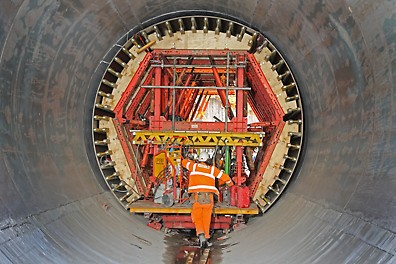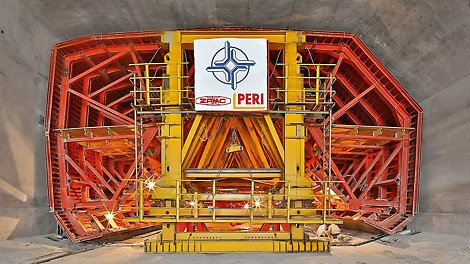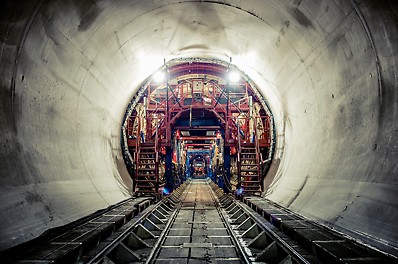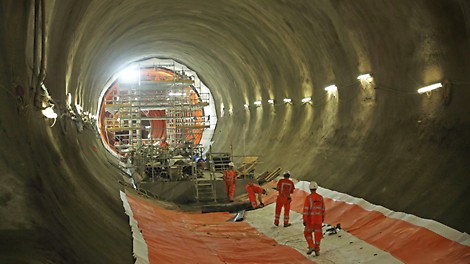
KERN Tunneltechnik
Learn more about leading tunnel engineering specialist KERN

Despite tunneling taking place around the world at different scales for thousands of years, the complexity and size of these projects still requires the best in civil engineering innovation and design.
The teams and specialities for tunnel construction usually consist of geologists, civil engineers, foundation engineers, tunnel specialists, road construction specialists, concrete technologists as well as planners for traffic and operational safety. This list alone provides a sense of the complexity of such construction projects.
In this network of specialists, we have made an international name for ourselves as a reliable partner of engineering, formwork, shoring and scaffolding systems for the most simple through to the most complex tunnel projects across all project phases from planning to completion.


As part of the PERI group, KERN are one of the world's leading tunnel specialists, with advanced engneering and product capabilities deployed around the world for tunnel projects of all types.
Founded in 2010 and headquartered in the Lugano-Paradiso, Switzerland, KERN have dedicated themselves to becoming the foremost provider of advanced machinery and engineering solutions for tunnels.
KERN aim to lead the way as the single solution provider in the underground infrastructure industry, driven by foundational values of competence and innovation. Their international presence and the successful completion of numerous major projects are a testament to their capability to revolutionise the market for formwork and tunnelling machines.

Learn more about leading tunnel engineering specialist KERN
The development of high performance concretes enabled a fundamental step forward in developing systematic construction methods in tunnel construction. With these improvements to construction technology also came a more standardised set of methods to concieve, plan and implement tunnel construction in the most economically viable manner.
Systemised formwork, shoring and scaffolding products to ensure the most cost effective and efficient creation of tunnel structures have subsequently been developed. This allows standardisation of parts, integration and resuse of systems to reduce costs and improve construction speed, and a more reliable method of construction.

The main criteria when selecting the construction method and structural shape are the tunnel cross-sections and their lengths. In addition, there are often curves and inclines in the course of the tunnel as well as varying geometries in the clear width and height. These changes to the standard cross-section can be required for many reasons, such as integration of parking and emergency stopping areas in transport tunnels, ventilation and service structures, train station boxes and plant and equipment integration to name a few.
In terms of construction, our tunnel construction methods include four types:
Regardless of the construction method, and tunnel design, we can provide systemised tunnel forming products for square, rectangular, round, elliptical or special tunnel designs. With many variables to control such as groundwater and geological conditions, we understand that our customers needs a dependable, high-quality and precisely engineered system to ensure the formwork operations are consistent and on programme.

Our tunnel construction solutions are typically based on a single system - the VARIOKIT engineering construction kit — or bespoke steel formwork design and manufactured specifically for your project. Regardless of the level of automation required for the shuttering and stripping processes or the traversing movements, we can provide the right solution from our systemised or bespoke range.
The PERI system solutions cover all life-cycle phases of tunnel structures: from new construction to maintenance and repair. PERI UP system scaffolding is integrated in to the process for access on the construction site, such as for primary concrete works or secondary tunnel lining and services installation.
From the very beginning, PERI has pursued a special modularity concept that sees two supposedly contradictory objectives as a unit and technically brings them together in product and component development. On the one hand, the PERI formwork and scaffolding systems are characterized by the greatest possible simplification in construction and handling. On the other hand, as highly standardized components, they allow a maximum of variability in their object-specific combination.
The functionally and logistically optimized concept ranges from a few core components with captive, self-locking and adjusting fasteners to a self-explanatory construction logic of the formwork and scaffolding systems to digital planning and execution tools, who ensure the construction and logistical project progress.